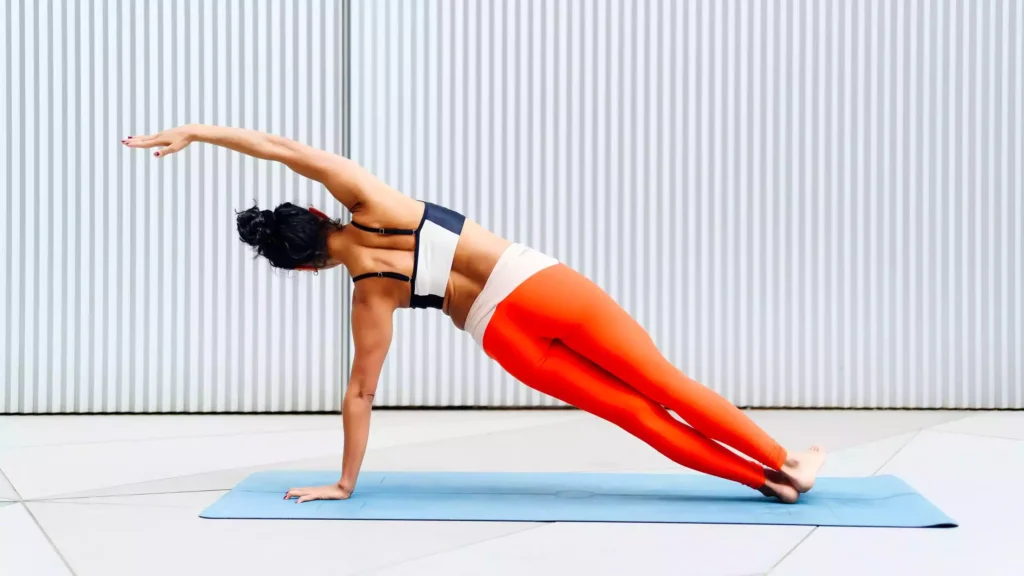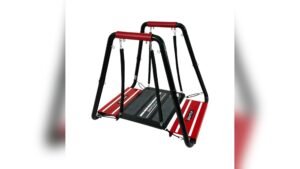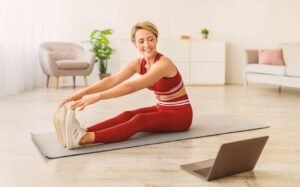Yoga has been practiced for thousands of years, originating in ancient India. It has evolved into various styles, each offering unique benefits. When it comes to building strength, certain yoga styles stand out. This article delves into the best yoga practices for enhancing strength, providing detailed insights and practical tips.
Table of Contents
ToggleUnderstanding Yoga for Strength
Historical Context of Yoga for Strength
Yoga’s roots can be traced back to the Indus Valley Civilization, around 3000 BCE. Initially, it was a spiritual practice aimed at achieving enlightenment. Over time, it incorporated physical postures (asanas) to prepare the body for prolonged meditation. These postures, especially in styles like Ashtanga and Power Yoga, are designed to build physical strength and endurance.
Modern Adaptations and Popularity
In the 20th century, yoga gained global popularity, with various styles emerging to cater to different needs. Modern adaptations focus on physical fitness, mental well-being, and spiritual growth. Styles like Power Yoga and Vinyasa Flow are particularly popular for their strength-building benefits.
Top Yoga Styles for Building Strength
Ashtanga Yoga
Ashtanga Yoga, developed by K. Pattabhi Jois in the 20th century, is a rigorous style that follows a specific sequence of postures. It emphasizes strength, flexibility, and stamina.
• Key Benefits:
– Builds core and upper body strength.
– Enhances flexibility and balance.
– Improves cardiovascular health.
• Suitable For: Intermediate to advanced practitioners due to its demanding nature.
Power Yoga
Power Yoga, a more dynamic and fitness-based approach, was popularized in the West in the 1990s. It draws inspiration from Ashtanga but offers more flexibility in sequences.
• Key Benefits:
– Enhances overall muscle tone.
– Boosts cardiovascular endurance.
– Increases flexibility and balance.
• Suitable For: All levels, with modifications available for beginners.
Vinyasa Yoga
Vinyasa Yoga, also known as Flow Yoga, involves fluid transitions between poses, synchronized with breath. It offers a balanced workout, combining strength, flexibility, and mindfulness.
• Key Benefits:
– Improves endurance and flexibility.
– Builds lean muscle mass.
– Enhances mental focus and relaxation.
• Suitable For: All levels, with sequences tailored to individual needs.
Bikram Yoga
Bikram Yoga, developed by Bikram Choudhury, consists of 26 postures practiced in a heated room. The heat helps to deepen stretches and detoxify the body.
• Key Benefits:
– Increases stamina and muscle strength.
– Promotes detoxification through sweating.
– Enhances flexibility and balance.
• Suitable For: Intermediate practitioners due to the intensity and heat.
Iyengar Yoga
Iyengar Yoga, founded by B.K.S. Iyengar, focuses on precision and alignment. It uses props like blocks and straps to assist in achieving correct postures.
• Key Benefits:
– Focuses on alignment and muscle control.
– Builds strength and stability.
– Enhances flexibility and balance.
• Suitable For: All levels, with a strong emphasis on proper form.
Key Poses for Building Strength

Plank Pose (Phalakasana)
The Plank Pose is a foundational strength-building posture that targets the core, shoulders, and arms.
• How to Perform:
– Start in a push-up position with hands directly under shoulders.
– Engage the core and keep the body in a straight line from head to heels.
– Hold for 30 seconds to 1 minute, gradually increasing the duration.
• Benefits:
– Strengthens the core and upper body.
– Improves posture and stability.
– Enhances endurance and stamina.
Warrior II (Virabhadrasana II)
Warrior II is a powerful standing pose that builds strength in the legs, hips, and shoulders.
• How to Perform:
– Stand with feet wide apart, turning the right foot out and the left foot slightly in.
– Bend the right knee, keeping it over the ankle, and extend arms parallel to the floor.
– Hold for 30 seconds to 1 minute, then switch sides.
• Benefits:
– Strengthens the legs and glutes.
– Opens the hips and chest.
– Improves balance and concentration.
Boat Pose (Navasana)
Boat Pose is an excellent core-strengthening posture that also engages the hip flexors and spine.
• How to Perform:
– Sit on the floor with knees bent and feet flat.
– Lean back slightly, lifting feet off the ground and extending legs.
– Extend arms forward, parallel to the floor, and hold for 30 seconds to 1 minute.
• Benefits:
– Strengthens the core and hip flexors.
– Improves balance and stability.
– Enhances concentration and focus.
Chair Pose (Utkatasana)
Chair Pose is a challenging standing posture that builds strength in the legs, glutes, and core.
• How to Perform:
– Stand with feet together, bending knees and lowering hips as if sitting in a chair.
– Extend arms overhead, keeping the spine straight.
– Hold for 30 seconds to 1 minute.
• Benefits:
– Strengthens the legs and glutes.
– Engages the core and back muscles.
– Improves balance and endurance.
Crow Pose (Bakasana)
Crow Pose is an advanced arm balance that builds strength in the arms, shoulders, and core.
• How to Perform:
– Start in a squat position with hands on the floor, shoulder-width apart.
– Lift hips and place knees on the upper arms.
– Shift weight forward, lifting feet off the ground and balancing on hands.
– Hold for 10 to 30 seconds.
• Benefits:
– Strengthens the arms and shoulders.
– Engages the core and improves balance.
– Enhances concentration and focus.
Tips for Success in Strength-Building Yoga
Consistency is Key
Regular practice is essential for building strength through yoga. Aim for at least three to four sessions per week to see noticeable improvements.
Focus on Alignment
Proper alignment ensures that you engage the correct muscles and avoid injury. Use props like blocks and straps if needed to achieve the correct form.
Listen to Your Body
Pay attention to your body’s signals and avoid pushing beyond your limits. Rest when needed and modify poses to suit your level of flexibility and strength.
Incorporate Breathwork
Breathwork (pranayama) enhances the effectiveness of your practice. Synchronize your breath with movements to improve focus and endurance.
Seek Guidance
Consider attending classes or working with a certified yoga instructor to receive personalized guidance and adjustments.
Common Mistakes to Avoid

Skipping Warm-Up
Skipping a proper warm-up can lead to injuries. Always start with gentle stretches and movements to prepare your body for more intense poses.
Ignoring Pain
Pain is a signal that something is wrong. If you experience sharp or persistent pain, stop the pose and consult a healthcare professional if needed.
Rushing Through Poses
Rushing through poses can compromise form and reduce the effectiveness of your practice. Take your time to move mindfully and maintain proper alignment.
Neglecting Rest Days
Rest days are crucial for muscle recovery and growth. Ensure you incorporate rest days into your weekly routine to avoid overtraining.
Comparing Yourself to Others
Yoga is a personal journey, and everyone’s body is different. Focus on your progress and avoid comparing yourself to others in the class.
Relevant Data Table for Which Yoga is Best for Strength
| Yoga Style | Key Strength Benefits | Suitable For |
| Ashtanga Yoga | Builds core and upper body strength | Intermediate to Advanced |
| Power Yoga | Enhances overall muscle tone | All levels |
| Vinyasa Yoga | Improves endurance and flexibility | All levels |
| Bikram Yoga | Increases stamina and muscle strength | Intermediate |
| Iyengar Yoga | Focuses on alignment and muscle control | All levels |
FAQs
1. What is the best yoga style for building muscle strength?
The best yoga style for building muscle strength depends on your fitness level and goals. Ashtanga Yoga is highly effective for building core and upper body strength due to its rigorous sequences. Power Yoga, with its dynamic and fitness-based approach, enhances overall muscle tone and cardiovascular endurance. Vinyasa Yoga, known for its fluid transitions, builds lean muscle mass and improves endurance. Bikram Yoga, practiced in a heated room, increases stamina and muscle strength. Iyengar Yoga, with its focus on alignment, builds strength and stability. Each style offers unique benefits, so it’s essential to choose one that aligns with your preferences and fitness level.
2. Can beginners practice strength-building yoga?
Yes, beginners can practice strength-building yoga. Many yoga styles, such as Power Yoga and Vinyasa Yoga, offer modifications and variations to accommodate different fitness levels. It’s essential for beginners to start with basic poses and gradually progress to more challenging ones. Using props like blocks and straps can assist in achieving proper alignment and form. Attending beginner-friendly classes or working with a certified yoga instructor can provide personalized guidance and adjustments. Consistency and patience are key, as building strength through yoga is a gradual process.
3. How often should I practice yoga to build strength?
To build strength through yoga, aim for at least three to four sessions per week. Consistency is crucial for seeing noticeable improvements in muscle tone and endurance. Each session should include a mix of strength-building poses, flexibility exercises, and breathwork. Incorporating rest days into your routine is essential for muscle recovery and growth. Listening to your body and avoiding overtraining is vital to prevent injuries. As you progress, you can gradually increase the intensity and duration of your practice to continue challenging your muscles.
4. Are there any specific poses that are best for strength?
Several yoga poses are particularly effective for building strength. Plank Pose (Phalakasana) targets the core, shoulders, and arms, enhancing overall upper body strength. Warrior II (Virabhadrasana II) builds strength in the legs, hips, and shoulders. Boat Pose (Navasana) is excellent for core strengthening and engaging the hip flexors. Chair Pose (Utkatasana) challenges the legs, glutes, and core. Crow Pose (Bakasana), an advanced arm balance, builds strength in the arms, shoulders, and core. Incorporating these poses into your practice can significantly enhance muscle tone and endurance.
5. Can yoga replace weight training for strength building?
Yoga can complement weight training but may not entirely replace it for those seeking significant muscle hypertrophy. While yoga builds functional strength, flexibility, and endurance, weight training specifically targets muscle growth through resistance exercises. Combining both practices can provide a well-rounded fitness routine. Yoga enhances flexibility, balance, and mental focus, which can improve weight training performance. Conversely, weight training can increase muscle mass and strength, benefiting yoga practice. It’s essential to tailor your fitness routine to your goals and preferences, incorporating both yoga and weight training as needed.
Conclusion
Yoga offers a holistic approach to building strength, combining physical postures, breathwork, and mindfulness. Styles like Ashtanga, Power Yoga, Vinyasa, Bikram, and Iyengar provide unique benefits, catering to different fitness levels and goals. Incorporating key strength-building poses, maintaining consistency, and focusing on proper alignment are essential for success. Avoiding common mistakes and seeking guidance from certified instructors can enhance your practice. Whether you’re a beginner or an advanced practitioner, yoga can significantly improve your strength, flexibility, and overall well-being.
Posts References:
Yoga For Strength: 9 of Yoga’s Best Strength-Building Poses | LiForme
yoga for strength – Reddit






